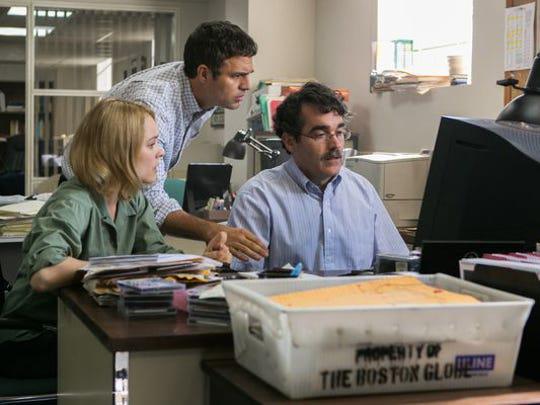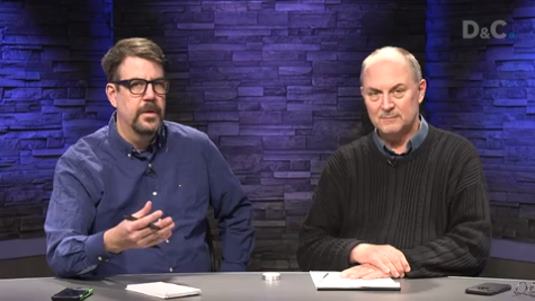|
Why the D&C commits resources to covering child sexual abuse in Greater Rochester
By Michael Kilian
[with video] "It’s time, Robby. They knew and they let it happen! To kids! This coulda been you, it coulda been me, it could have been any one of us." -- Mark Ruffalo, playing Boston Globe reporter Mike Rezendes, in "Spotlight" If you've never seen the Academy Award-winning film "Spotlight" from 2015, I highly recommend you watch/stream it at home this winter. Featuring stellar performances from Rachel McAdams and Mark Ruffalo and from old pro Michael Keaton, this film is riveting in exploring how The Boston Globe unearthed an extensive cover-up by the Roman Catholic Diocese of Boston of sexual abuse of children by priests and other religious figures. It wasn't a story the substantially Irish-Catholic community of Boston necessarily wanted to hear in 2002. It certainly wasn't a story the church wanted revealed, after decades of shifting abusing priests from parish to parish without repercussions. And it wasn't a story that even the journalists involved fully agreed on how to cover, as The Globe's editors ultimately decided to ferret out the pattern of the cover-up rather than merely writing about individual cases. Investigative reporting: 'mix of frustration, drudgery and excitement'"The movie...vividly captures the mix of frustration, drudgery and excitement that goes into every great investigative story," nonprofit investigative journalism outlet ProPublica wrote in 2016 of the film. That observation speaks to the reality of life for every journalist whose task it is to hold leaders and institutions accountable for their actions. And that includes the excellent investigative team at the Democrat and Chronicle led by Investigative Editor Matthew Leonard. That team's core has spent considerable time in 2019 writing about allegations of sexual abuse of children and teens in Greater Rochester, allegations aimed not only at priests but at coaches, teachers, scout leaders and even a former distribution employee of this newspaper. One spur for such coverage this year is, of course, the New York state Child Victims Act, which has created a time window for individuals to make civil court claims regarding abuse they say they suffered many years or even decades ago. That such a law, which in essence waives the statute of limitations for this crime, came into being reflects a harsh reality: that sexual abuse of children is far more prevalent in our society than leaders, institutions and citizens have ever realized or wanted to acknowledge. https://www.timesunion.com/news/article/Lawmakers-activists-call-for-national-expansion-14569179.phpClose to 1,000 cases had been filed in roughly the first three months of the Child Victims Act time window. Countless more are likely before the window closes next summer. D&C reporters go to great lengths to explore lessons from each caseFor D&C journalists, especially Steve Orr, Sean Lahman and Meaghan McDermott, such cases present an opportunity to raise questions anew about how well or poorly businesses and institutions responded to allegations of the abuse of children in their employ or care. It seems increasingly evident that in the latter decades of the 20th century, many organizations had inadequate responses to such allegations. The focus appears to have been on resolving such matters quietly, without bringing in police to investigate.A person might be fired or told to resign, only to turn up in a similar role elsewhere without the new employer knowing there might have been problems previously. Such an approach might have served to spare the organizations unwelcome headlines.Tragically, it left a substantial number of individuals who say they've experienced abuse as children without a proper sense of closure, let alone psychological or other support. That we are 17 years past the events of "Spotlight" in Boston and there are still many hundreds of abuse claims emerging in our society speaks to all the unhealed wounds and the lack of justice in cases where abuse indeed occurred. Child Victims Act reporting can take its own tollIf you read McDermott's and Orr's piece about a recent Child Victims Act lawsuit against former East High music teacher Edwin Fleming, you no doubt found it difficult to absorb the details that are alleged and the pain the plaintiffs have felt for some 40 years. For reporters, such interviews often take several hours and might occur in more than one sitting. As executive editor, I strive to remember that reporters who write about trauma are not robots, that they often have to process emotionally what they are hearing and learning from interviews and reviews of court documents. Immersing oneself in such almost unfathomable detail can take a real toll. Modern newsrooms are slowly becoming more alert and aware of the emotional trauma journalists can experience while writing about the trauma their story subjects have experienced. I've pledged to our newsroom's Culture Team we'll provide more resources and help in this area going forward. I also remind myself -- and tell you our loyal readers -- that we are journalists but not prosecutors. It is our job to document what we've found and to pose sometimes difficult questions for leaders in our community to seek to answer. In the end, every Child Victims Act case will be resolved in a court of law, not in the court of public opinion. At some point, however, it's going to be vital that leaders and institutions and parents seek to address this vital question: If so much sexual abuse of kids was taking place in the 1900s, what are we doing today to prevent it in the 2000s? Contact: mkilian@gannett.com
|
.
Any original material on these pages is copyright © BishopAccountability.org 2004. Reproduce freely with attribution.


